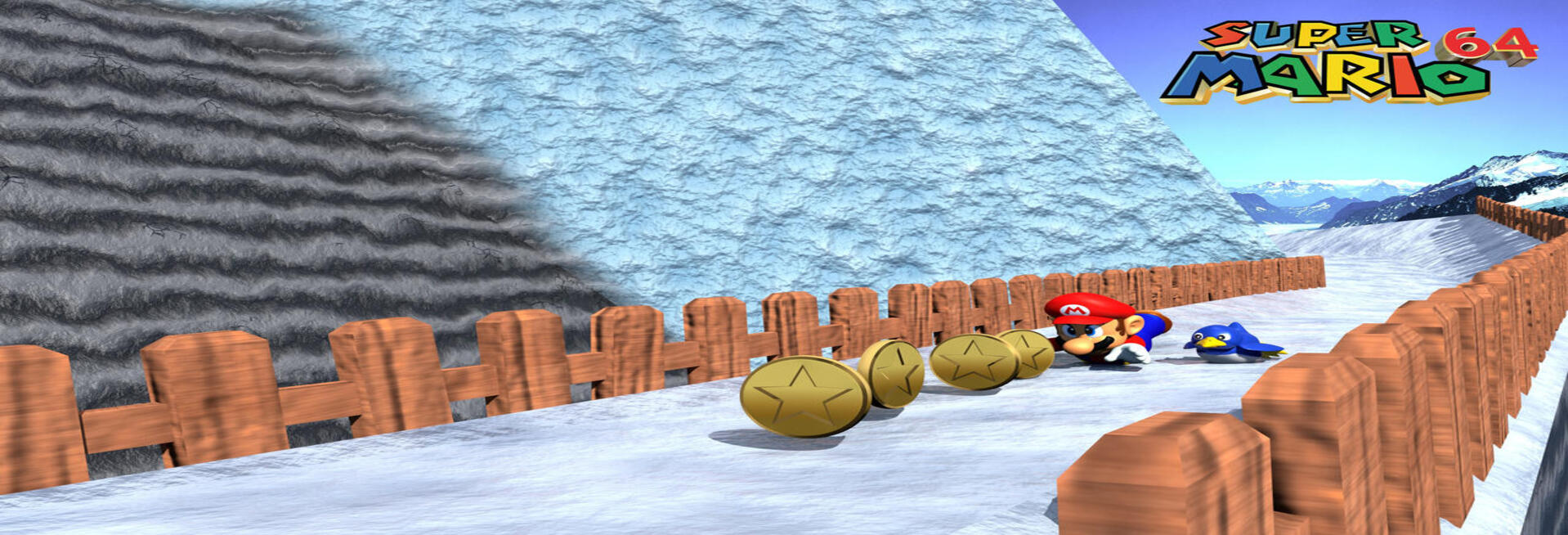
Peter Main, Nintendo's vice president of marketing at the time, stated Super Mario 64 was meant as the killer app for the Nintendo 64. The US$20
million[i] marketing campaign
included videotapes sent to more than five hundred thousand Nintendo Power subscribers and
advertisements shown on MTV, Fox, and Nickelodeon[55][56].
Super Mario 64 was officially released in Japan in June 1996,[2] North
America in September,[1] and in Europe
and Australia in March 1997[3][4].During its
first three months of sale in North America, it sold more than two million copies and grossed $140
million[ii] in the United
States,[57] becoming the
best-selling video game of 1996[58] It was also the
best-selling game overall from 1995 to 2002. During the first three months of 1997, it was the
second-best-selling console game at 523,000
units.[59] By early
2001, it had sold 5.5 million units,[60] and 5.9 million by
September 2002[61].
""
At the 1999 Milia festival in Cannes, Super Mario 64
won a Gold ECCSELL prize for earning revenues above €21 million[iii] in the European Union in 1998.[62] It had become the
second most popular game on Wii's Virtual Console by June 2007, behind Super Mario Bros[63] By March 2008, Super Mario
64 sold 11.8 million copies worldwide, being the best-selling Nintendo 64 game.[64] By 2015, Super Mario
64 was the 12th most sold Mario game, with 11.91 million copies sold.[65]
Main article: Super Mario 64 DS
An enhanced remake, Super Mario 64 DS, was
released for the Nintendo DS in 2004. As with
the original, the plot centers on collecting Power Stars and rescuing Princess Peach from Bowser. In
contrast with the original, Yoshi is the starting character, with Mario, Luigi, and Wario as unlockable characters.[66] It features improved
graphics, slightly altered courses, new areas, powerups, and enemies, more Power Stars to collect, touchscreen mini-games, and a multiplayer
mode.[67] Reviews were mostly
positive, with critics praising the graphics and add-ons to the original game but criticizing the
controls and multiplayer mode.[68][69] By September 2021, 11.06
million copies had been sold worldwide[70].
A version of Super Mario 64 was used as a tech demo
for the Nintendo 64 Disk Drive (64DD) floppy drive at
the 1996 Nintendo Space World trade show.[71]Like Wave Race 64, Super Mario 64 was re-released
in Japan on July 18, 1997 as Super Mario 64 Rumble Pak Version[a] which fixed various bugs,
added support for the Rumble Pak peripheral,
included the voice acting from the English version, among other changes[72][73][74][75].
In November 2003, it was ported to China's iQue Player as a limited-release demo.[5][6] In late 2006, it
was released on the Wii Virtual Console service[76] which added enhanced
resolution and compatibility with the GameCube and Super Famicom Classic
controllers.[77] In
September 2020, Super Mario 64 was one of the three Super Mario games to be included in the Super Mario 3D All-Stars
collection on Nintendo Switch.[78] This version was based on
the Rumble Pak iteration,[79]
and updated the game's presentation to display at 720p resolution in both the Switch's docked and
handheld configurations, in addition to using upscaled user interface assets and textures. It also
features a new control scheme that accommodates the wider button array of the Nintendo Switch Joy-Con and Pro Controller, and was
later patched to add compatibility for the Nintendo 64 controller used with the Nintendo Switch Online service.[80] It made another Nintendo
Switch appearance in October 2021 as part of the Nintendo 64 lineup for the Nintendo Switch Online +
Expansion Pack[81].